“Best Practices” for handling cooking oil
Turn your kitchen into a No Burn Zone
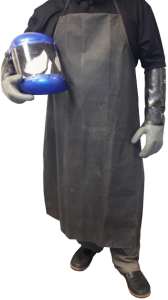
Here’s what every new employee must know if there’s any chance that they’ll be handling cooking oil. Follow these safety measures AT ALL TIMES:
- Follow the manufacturer’s recommendations – When storing, refilling, filtering or disposing cooking oil, be sure to read and obey instructions on the equipment and the
- Don’t touch hot cooking oil directly – Cooking oil is heated to a specific temperature during the frying process and it can cause 3rd-degree burns on exposed
- Always wait for the oil to cool before handling – Allowing the oil to cool in temperature will reduce the safety hazard, but not eliminate the possibility of burn Even after cooling, used cooking oil will remain seriously hot.
- Always wear the proper attire when handling used cooking oil – gloves, face mask, full-body apron, closed toe shoes. Never let your guard down, because accidents can happen at any
- Always use a Mahoney Shuttle, Portable Filter Machine, or Caddy to transport oil – Mahoney provides many easy-to-use transport options to move your used oil from the fryer to the collection tank. Never use buckets, pots, or pans to transport oil – they can easily spill and are not safe.
- Clean any oil spills completely and immediately – If oil has spilled, soak it up from the floor with absorbent towels, cat litter, or Oil-Dri. Ignoring spilled oil could lead to employee slips and falls, and will cause bad odors.
- Communicate with fellow employees – Warn employees in close proximity whenever you will be handling used cooking oil so they know to be aware and act responsibly,
- Keep safety equipment close by – Fire extinguishers and Mahoney oil transport devices should always be quickly accessible and in proper working
- Be prepared to administer first aid – In the event of an accident, all employees and staff should be trained to administer first aid for burn injuries and to call 911.
“Must-have” safety attire:
Always dress for successful outcomes
Maximize your safety by minimizing exposed skin. Wear protective gear every time you refill fryers with cooking oil or filter, discard and transport used cooking oil.
- Gloves: Heat-resistant gloves that extend mid-wrist or longer to protect against direct contact and splashing
- Mask: Full shield to guard the entire face from splash
- Full-body apron: Made of heat-resistant, heavy rubber to protect the upper and lower body from spillage and
- Closed toe shoes: Thick, heavy work boots with treaded soles are recommended to reduce the risk of slips, falls an
Employee Safety - Handling Hot Oil:
Identify and treat burn injuries
The following information on burn injuries and treatment was obtained from mayoclinic.com/health/burns.
1st-degree burn
The least serious burns are those in which only the outer layer of skin is burned, but not all the way through. The skin is usually red with swelling present.
Treat a first-degree burn as a minor burn unless it involves substantial portions of the hands, feet, face, groin or buttocks, or a major joint, which requires emergency medical attention.
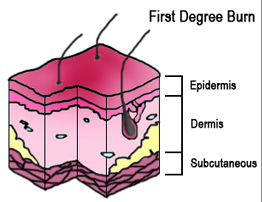
Attribution: Persian Poet Gal at English Wikipedia
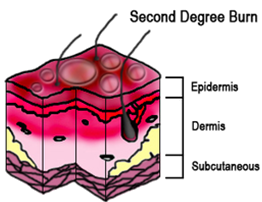
Attribution: Persian Poet Gal at English Wikipedia
2nd-degree burn
In second-degree burns the first layer of skin is burned through and the second layer of skin (dermis) is also burned. Blisters and swelling are evident while the skin appears splotchy.
If the second-degree burn is no larger than 3 inches in diameter, treat it as a minor burn. When the burned area is larger or if the burn is on the hands, feet, face, groin or buttocks, or over a major joint, treat it as a major burn and get medical help immediately.
For minor burns, take the following action:
- Cool the burn. Hold the burned area under cool (not cold) running water for 10 or 15 minutes or until the pain You may also cool it with cold compresses. Cooling the burn reduces swelling by conducting heat away from the skin. Don’t put ice on the burn.
- Cover the burn with a sterile gauze Don’t use fluffy cotton, or other material that may get lint in the wound. Wrap the gauze loosely to avoid putting pressure on burned skin. Bandaging keeps air off the burn, reduces pain, and protects blistered skin. Never apply butter or ointments, this could cause infection.
- Take an over-the-counter pain Consult your local pharmacy before dispensing aspirin.
3rd-degree burn
The most serious burns involve all layers of the skin and cause permanent tissue damage. Fat, muscle and even bone may be affected. Areas may be charred black or appear dry and white.
For major burns, call 911 for emergency medical help. Until an emergency unit arrives, follow these steps:
- Don’t remove burned However, do make sure the victim is no longer in contact with smoldering materials or exposed to smoke or heat.
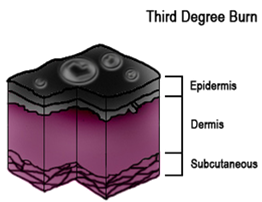
Attribution: Persian Poet Gal at English Wikipedia
- Don’t immerse large severe burns in cold Doing so could cause a drop in body temperature (hypothermia) and deterioration of blood pressure and circulation (shock).
- Check for signs of circulation (breathing, coughing or movement). If there is no breathing or other sign of circulation, begin
- Elevate the burned body part or Raise above heart level, when possible.
- Cover the area of the Use a cool, moist, sterile bandage; clean, moist cloth; or moist cloth towels.
Everyone makes mistakes. But to take shortcuts around proven safety steps when handling cooking oils can be extremely dangerous. Because the temperatures inside deep fryers may reach up to 600°F, bad things can and will happen when employees fail to properly handle used cooking oil— from slips to falls to third-degree burns.
Kitchens can get chaotic. So, it’s important to always stay alert and keep your cooking oil under control. Remember, improper handling of hot cooking oil is not only hazardous to you; it can seriously endanger everyone around you.
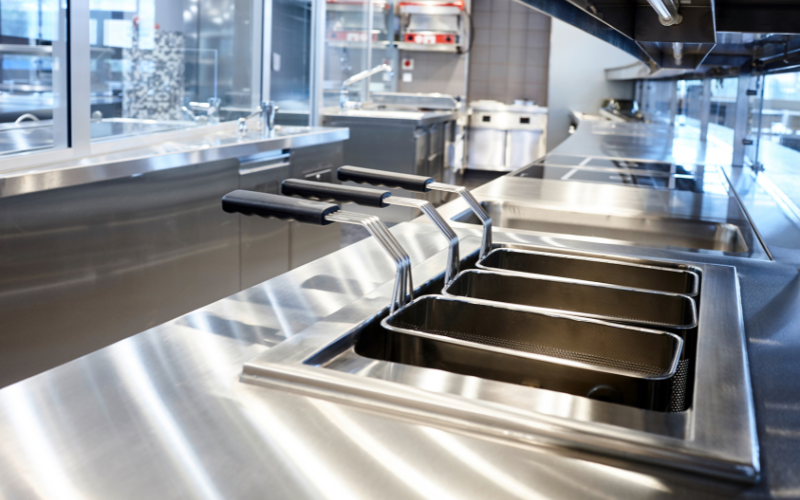
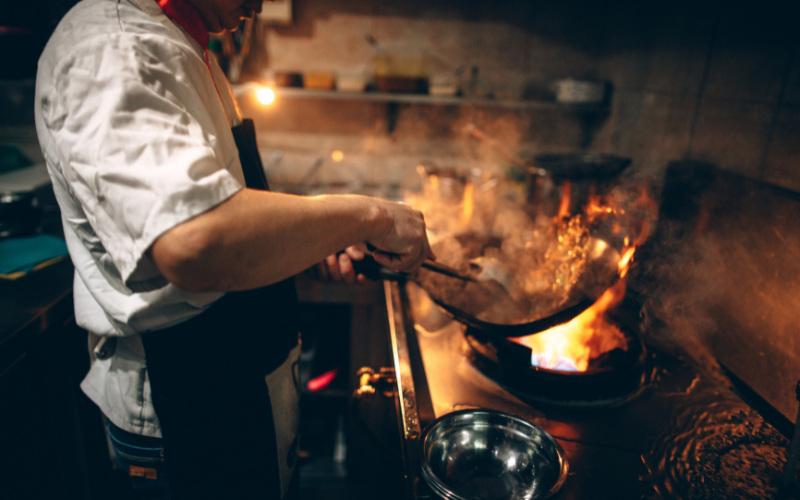
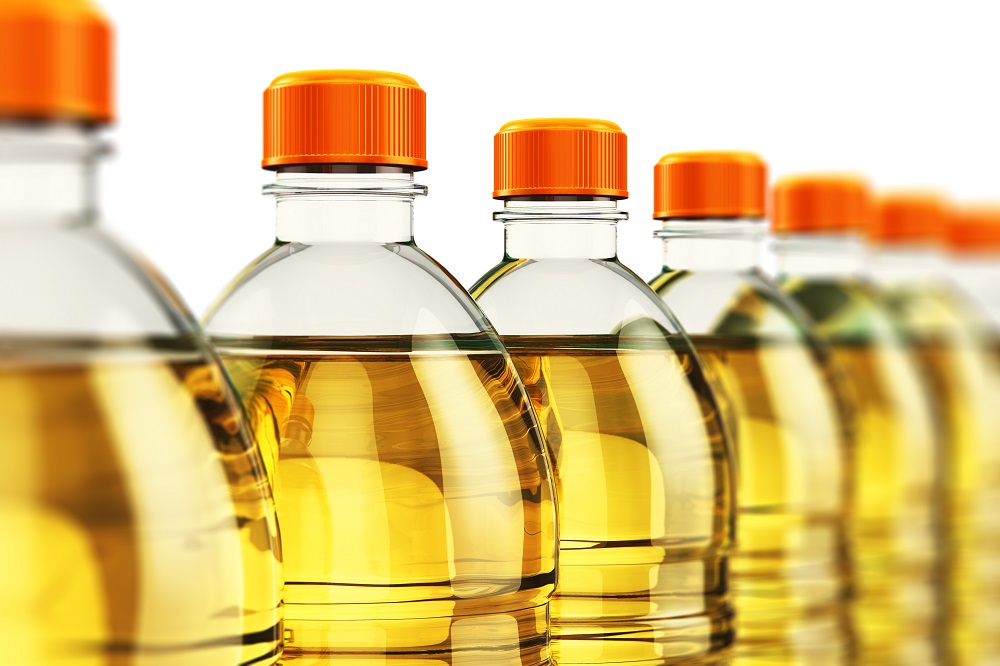
 Call Us Now (800) 892-9392
Call Us Now (800) 892-9392